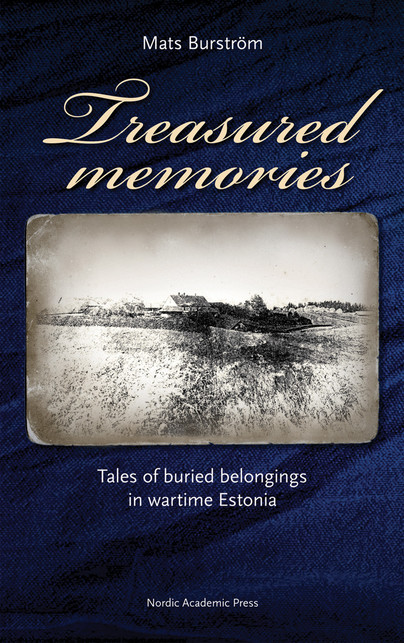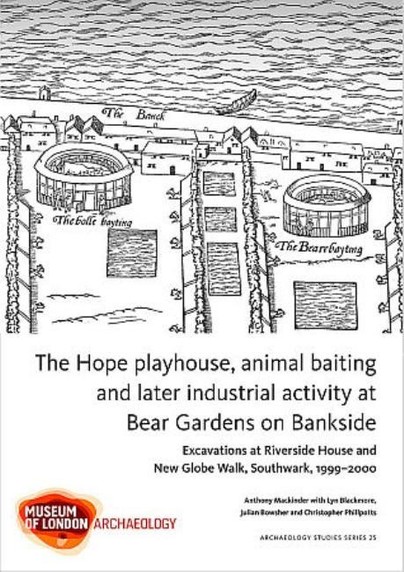
Format: Paperback
Pages: 94
ISBN: 9781907586200
Pub Date: 31 Mar 2013
Imprint: MOLA (Museum of London Archaeology)
Series: MoLAS Archaeology Studies Series
Description:
Southwark’s famous Bankside was long known as an entertainment area up to the 17th century. This volume provides evidence for the Barge, one of the medieval stewhouses (tavern/brothel) and the later Hope, a dual purpose building hosting animal baiting as well as play performances. The next phase in Bankside’s history was industrial and its glass and pottery products of the 17th and 18th centuries were much sought after.
Evidence for their production was found on the sites. The remains of 19th-century brick buildings relate to a known iron foundry in the area.

Format: Hardback
Pages: 272
ISBN: 9781842175101
Pub Date: 08 Mar 2013
Description:
Fifteen papers present the results of new research into various aspects of material culture and historical archaeology that reflect culture, trade and social interaction shared by Britain and Colonial America during the Tudor and Stuart periods. Recurrent themes include the use, significance and, in some cases, trade in specific types of pottery, including the ubiquitous stoneware flasks or canteens for sailors and solders on both sides of the Atlantic, and commodities such as wine and copper objects; the architectural history of manor houses and archaeology of plantations; aspects of the historical archaeology of Jamestown and Martins Hundred; the role of specific individuals in the development of Tudor-Stuart life and our new understand of a London destroyed the Great Fire based on Noel Humes rescue digs in a London destroyed by the Blitz. Overall the papers reflect the wide-ranging interests of Ivor Noël Hume, to whom the volume is dedicated.
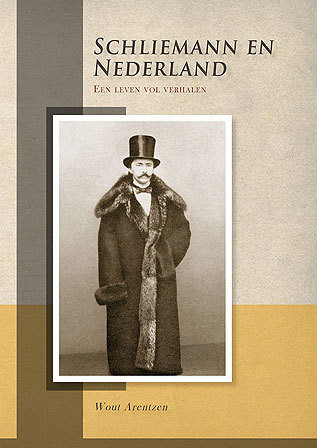
Format: Paperback
Pages: 300
ISBN: 9789088900914
Pub Date: 31 Dec 2012
Imprint: Sidestone Press
Description:
This book describes the life of the famous archaeologist and shrewd trader Heinrich Schliemann (1822-1890) from a Dutch perspective since his commercial succes started in the Netherlands. We see how two myths meet: the myth of the ancient city Troy and the the myth of the poor boy that was determined to find the remains of this legendary city.Dutch text.
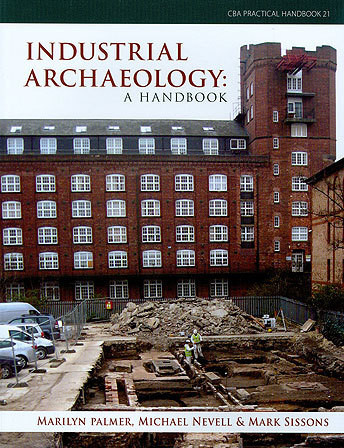
Format: Paperback
Pages: 304
ISBN: 9781902771922
Pub Date: 18 Apr 2012
Imprint: Council for British Archaeology
Series: CBA Practical Handbook
Description:
This Handbook provides an informative and accessible guide to the industrial remains of the UK. It is essential reading for anyone with an interest in our industrial heritage, giving concise summaries of the history of different industries, together with descriptions of the structures and below-ground remains likely to be encountered. The book also considers the power which drove these industries, the transport network which delivered the products and the houses in which the workforce lived.
It further reviews the legislation protecting industrial sites and the problems and potential of their adaptive re-use.

Format: Paperback
Pages: 160
ISBN: 9781902771762
Pub Date: 31 Dec 2008
Imprint: Council for British Archaeology
Illustrations: b/w and col illus
Description:
A pioneering regional study of one of the UK's key heavy industries in the 20th century - aggregates. Combining archaeological fieldwork with historical research and oral testimony, Tim Cooper traces the development of the industry through the 20th century, the machinery and processes used in quarrying, issues of supply and storeage, its place in the wider industry, and perhaps most prominently its significant impact on the Trent Valley landscape.
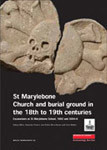
Format: Hardback
Pages: 172
ISBN: 9781901992793
Pub Date: 12 Nov 2008
Imprint: MOLA (Museum of London Archaeology)
Series: MoLAS Monograph
Description:
St Marylebone parish grew from humble beginnings on the city's margins to become, in the 18th and 19th centuries, one of the wealthiest in London, home to the elite and fashionable. The small parish church on Marylebone High Street, built in brick in 1742 on the site of the medieval church, was inadequate for such a congregation and was superceded in 1817 by today's far grander edifice on Marylebone Road. Archaeological investigations in 1992 showed that the graveyard - levelled in the 1930s for a playground for St Marylebone Church of England School for Girls - lay substantially undisturbed beneath the playground.
In 2004 plans to build an underground sports hall allowed excavation of a sample of the burial ground and part of the church itself. Most of the 350+ burials recorded were from the graveyard; some were in family vaults and others inside the church crypt. The archaeological results and detailed osteological analysis of 301 individuals are combined with documentary research into the parish and its population, including the woman who preferred parrots to men, the artist who died of lockjaw and the Reverend headmaster and his 'most wicked and abandoned wife'. This volume is one of the largest and most comprehensive studies of a post-medieval London cemetery.
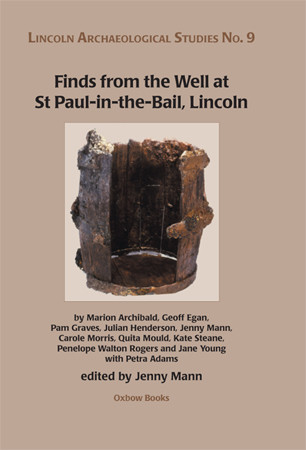
Format: Hardback
Pages: 106
ISBN: 9781842172575
Pub Date: 27 Aug 2008
Series: Lincoln Archaeology Studies
Illustrations: 51 b/w illus, 4p col illus, 11 tabs
Description:
This report examines the finds from the 17th-century backfill of a well in the churchyard of St. Paul-in-the-Bail. Dug possibly as early as the 1st century, the well lay within the east range of the later forum , and may have been used subsequently as the baptistry of two successive early churches, built some time between the late 4th and 7th centuries.
The history and use of the well is briefly outlined, with the focus of the volume on the finds. The assemblage from the 17th-century backfill represents the largest group of artefacts of this period to have been recovered in the city of Lincoln and contains a high proportion of organic material. The artefacts show a wide range in type and quality, including both common household articles and items indicating a relatively high social status. Selected finds are catalogued, primarily by function.
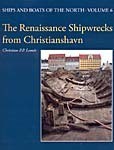
Format: Hardback
Pages: 371
ISBN: 9788785180346
Pub Date: 01 Dec 2006
Imprint: Viking Ship Museum
Series: Ships & Boats of the North
Illustrations: many illus
Description:
This is volume 6 in the Ships and Boats of the North series and comprises an archaeological and architectural study of north west European shipbuilding between 1580 and 1640. The main aim of the research leading up to this publication has been to discover the specific carvel shipbuilding methods used in north west Europe in the Renaissance period. The study is based on the analysis of a group of finds excavated under the direction of the author in Copenhagen in 1996 and 1997.
A total of 8 wrecks were discovered and recorded in the Christianshavn quarter of Copenhagen, and excavation revealed that some of these wrecks had been used in the 17th and 18th centuries as foundations for the construction of a harbour. Five were the remains of large carvel-built vessels dating from the reigns of Danish kings Frederik II (1559-88) and Christian IV (1588-1648) and thus represent a unique collection of Renaissance ship-types used in Danish waters.
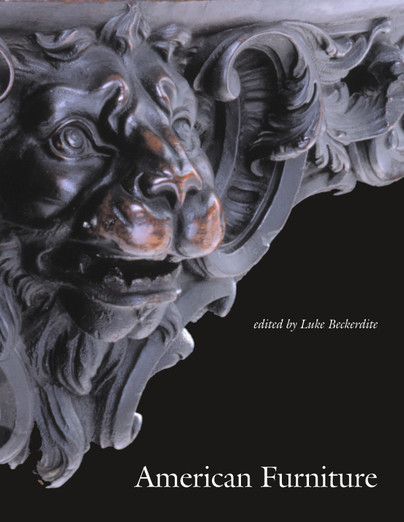
Format: Paperback
Pages: 316
ISBN: 9780972435345
Pub Date: 20 Jan 2005
Imprint: Chipstone Foundation
Series: American Furniture Annual
Illustrations: 308 illus. (230 colour). 10 fig. Table. End-paper
Description:
Acknowledged as the journal of record in its field, American Furniture presents new research on furniture design, use, production, and appreciation. Begun in 1993, this award-winning annual provides a comprehensive forum on furniture history, technology, connoisseurship, and conservation by the foremost scholars in the field. It is the only interdisciplinary journal devoted exclusively to furniture made or used in the Americas from the 17th century to the present.

Format: Paperback
Pages: 105
ISBN: 9781842171110
Pub Date: 01 Nov 2003
Illustrations: b/w figs
Description:
The double-dactyl, a poetic form never intended for the serious or high-minded', was invented in 1951. One of the form's rules is that the verse must contain a double-dactyl name, such as Higgledy-Piggledy . This collection, the result of an obsession of the authors, substitutes the doubl-dactyl rhyme with a Latin expression or tag, providing a witty poetic tour through Roman history.
Beginning with Aeneas and ending with the last emperors, each brief poem is faced with an original drawing and accompanied by a short piece of text that sets the historical scene. Includes a glossary of Latin tags.
Intellectual Culture in Elizabethan and Jacobean England
The Latin Writings of the Age
Format: Hardback
Pages: 762
ISBN: 9780905205731
Pub Date: 01 Dec 1990
Imprint: Francis Cairns Publications
Illustrations: xxvi + 762 pages.
Description:
Works written and published in Latin by Elizabethan and Jacobean writers covered a vast range, from brief poetic trifles to massive scholarly, humanist and scientific treatises. Among its authors were some of the greatest intellects of the day; and study of Latin dedications and commendatory verses makes clear the importance of Latinate culture in the Court as well as in the universities and learned professions. English renaissance Latin culture was the shared intellectual background for all educated people, England's bridge to the scientific, literary, political, philosophical and religious life of continental Europe.
J.W. Binns has examined almost all the numerous books written in Latin and printed in England during the Elizabethan and Jacobean periods. Intellectual Culture in Elizabethan and Jacobean England (ICEJE)is the result of over 25 years labour - the first comprehensive overview of the Latinate culture of England, which was the counterpart, on a higher intellectual level, of the better-known contemporary achievements in the English vernacular. It discusses various aspects of the Latin poetry of Renaissance England (seven chapters); Latin drama, and its attackers and defenders; translations into Latin from Greek and from European vernaculars; treatises on such disparate subjects as translation theory, the soul, swimming, and humanist historiography and biography; writings on theology; legal studies; and the physical sciences. Treatments vary, from the close study of significant individuals (such as Case and Rainolds) to broader surveys, for example, of Latin style. Latin quoted in the main text is accompanied by English translation. The extensive reference section contains a tripartite Bibliography, of manuscripts, books printed before 1751, and books and articles printed after 1750; a Biographical Register of around 1000 entries; and an Index of Modern Authors, followed by a detailed General Index. ICEJE is a treasure-house of ideas and material for all researchers into Elizabethan and Jacobean literary culture. It is an essential handbook for students of English literature, renaissance scholars, cultural historians, latinists, librarians and bibliographers.
The Stock Exchanges of Ireland
Format: Hardback
Pages: 273
ISBN: 9780905205342
Pub Date: 01 Dec 1986
Imprint: Francis Cairns Publications
Illustrations: 8 plates
Description:
The Stock Exchanges of Ireland traces the evolution of the markets which have operated in Ireland from their emergence (Dublin at the end of the eighteenth century, and later Belfast and Cork in the nineteenth) to the mid-1980s when this book was published. It starts with the historical circumstances - the beginnings of the Irish National Debt in the mid-eighteenth century and the problems of government borrowing in time of peace and war - which preceded the formation, in 1799, of the Dublin Stock Exchange. Later chapters examine many aspects of the market's development during the nineteenth century: changes in its practices and customs; the origins of some of the oldest surviving broking firms; the important trade in government securities between London and Dublin; the Irish railways; and the formation of joint stock companies in Ireland.
Finally, the role of the Stock Exchange in the finance of government and industry since Irish independence is fully covered. Throughout, The Stock Exchanges of Ireland is soundly based on the surviving records (to which the author was granted full access) of the three Irish markets - Dublin, Cork and Belfast. Important new material was also obtained from the Irish Record Office, the National Library of Ireland, the archives of the Bank of Ireland and the Record Office of the Bank of England. The book makes a comprehensive and significant contribution to Irish and financial history, and will prove an essential work of reference. It is also a lively, readable account of growth, change and development in the Irish markets, which should interest all concerned with banking, finance, investment and stockbroking. Among W. A. Thomas's other publications on the history of financial institutions are The Stock Exchange: Its History and Functions (with E. Victor Morgan) (1962), The Provincial Stock Exchanges (1973) and The Finance of British Industry 1918-1966 (1980) .





